France Prešeren was born on 3rd December 1800 in Vrba to a wealthy landowning family. Prešeren's parents wanted their children to be educated, therefore they sent them to his uncle who was a priest. So, at the age of eight, France left Vrba. He returned home for Easter, during summer, and when on holiday.
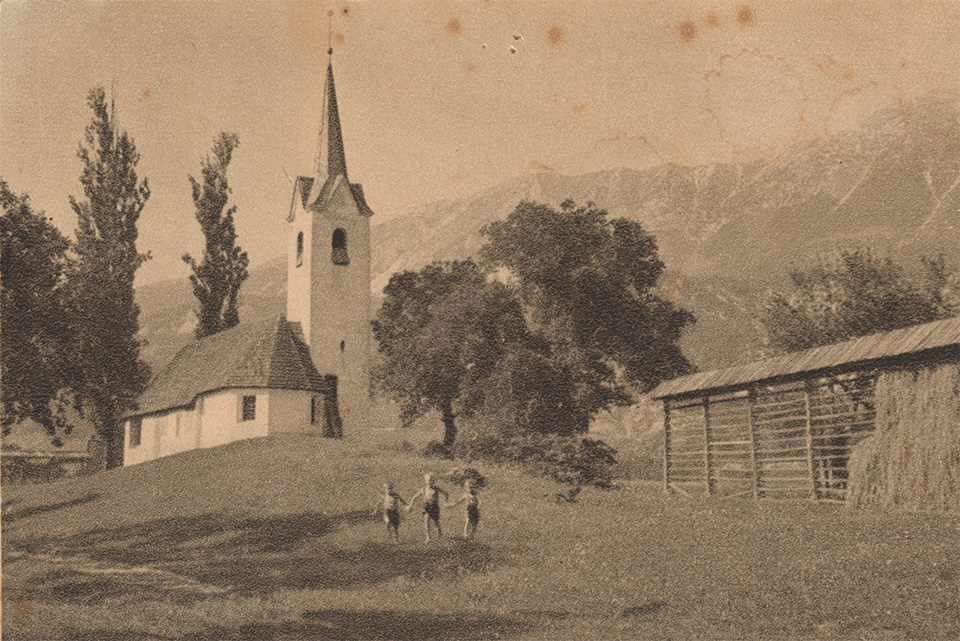
St. Mark's church with Mt. Stol in the background, 1950
For the first two years Prešeren was taught by his uncle Jožef, who at that time was a priest at Kopanj in Velika Račna, then from 1810–1812 he attended primary school in Ribnica. This was followed by a period of schooling in Ljubljana, where up to 1821 he achieved great results at secondary school followed by two years studying philosophy at college. In addition to a grant, Prešeren earnt money by tutoring. His most distinguished customer was the Pagliaruzzi family from Cekin Mansion in Siška, Ljubljana.
Prešeren spent the third year of his study of philosophy at the University of Vienna. Based on his mother's expectation, Prešeren was to have then continued by studying theology. However, the support of his uncle Jožef, who said “If you don't find joy in the clerical profession, I will help you in Vienna,” allowed him to make a different and more honest decision. As a result, Prešeren decided to study law. He lived in Vienna with the support of his uncle – a priest – and from his grant, while for some time he also worked as a home tutor. He achieved a degree in law on 27th March 1828.
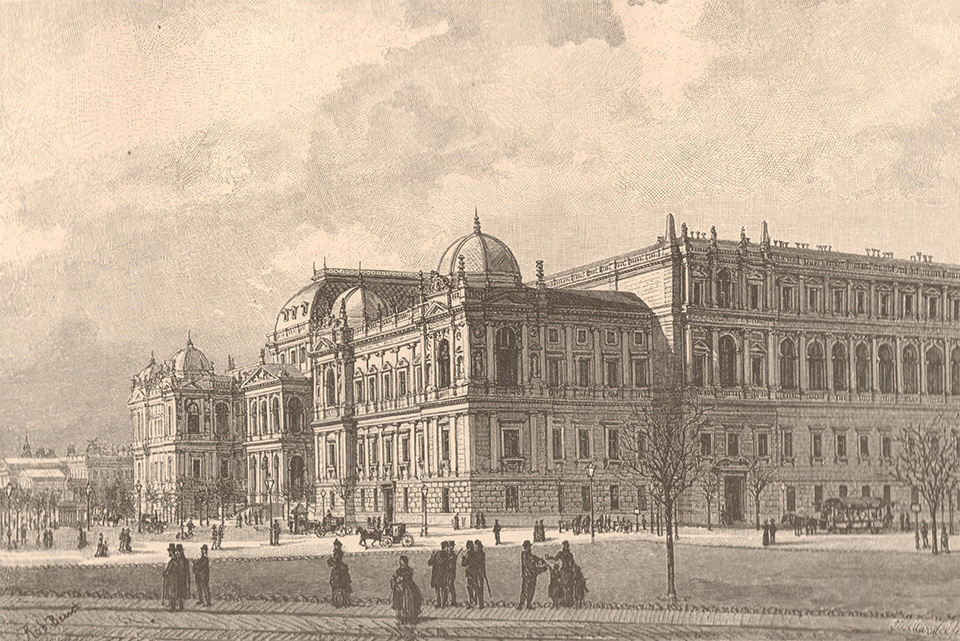
xxx
Prešeren returned to Ljubljana in 1828 and worked as an intern at the office of the lawyer Leopold Baumgartner, then a year later as a clerical intern at the Ljubljana Tax Administration. At that time a close friendship and literary cooperation developed between Prešeren and Matija Čop, who had already met as teenagers, related to their work on Kranjska čbelica– an almanac of poetry – and Črkarski pravda – an alphabetical linguistic and cultural-literal polemic. This began in 1831 and intensified with Čop's contributions in the newspaper Ilirski list (Illyrisches Blatt), inparticular with 'The Slovenian Alphabet War' and Prešeren's satirical verses. In 1832, having passed his court and bar exams, Prešeren first applied to become an independent barrister, however, he was unsuccessful. In the same year he also turned down the opportunity of marrying Marija Johana Khlun from Graz, Austria, and with it the deposit for his admittance to the bar that her family would have paid. For the next two years, he returned to work at the office of the lawyer Leopold Baumgartner, then in 1834 found work at the offfice of Dr. Blaž Crobath where he remained until he moved to Kranj in 1846 when, after six unsuccessful attempts, his application for an independent barristership was finally accepted.
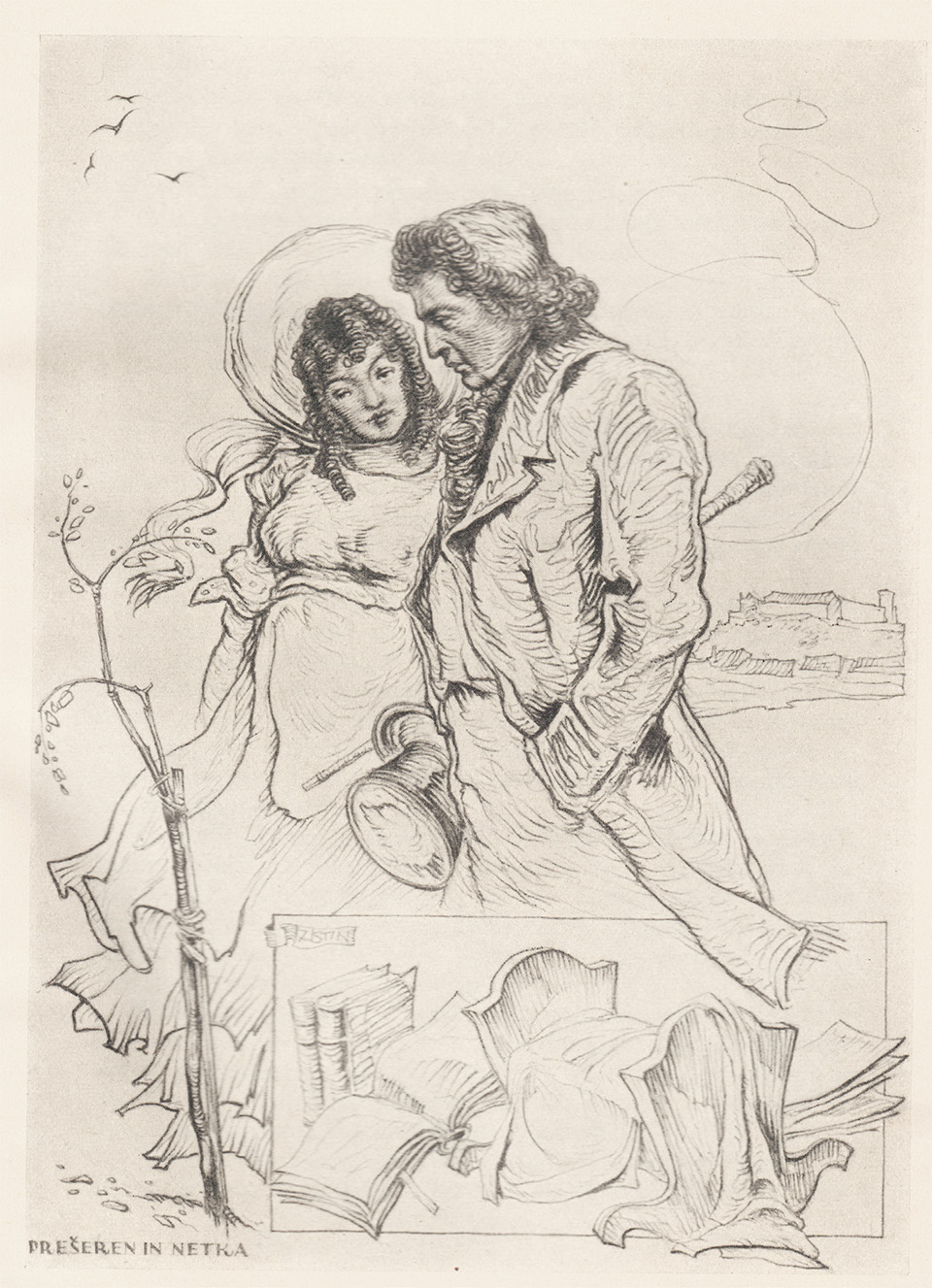
Elko Justin, Prešeren and Netka, 1937, pen-and-ink drawing
“If it's a girl, her name will be Rezika. From that time on, he came every day; he took my mother for a walk and composed poems along the way. And, if he was in a particularly good mood, he even sung. He had a rather pleasant voice, though he wasn't actually a singer.” (From Memories of Prešeren by Ernestina Jelovšek)
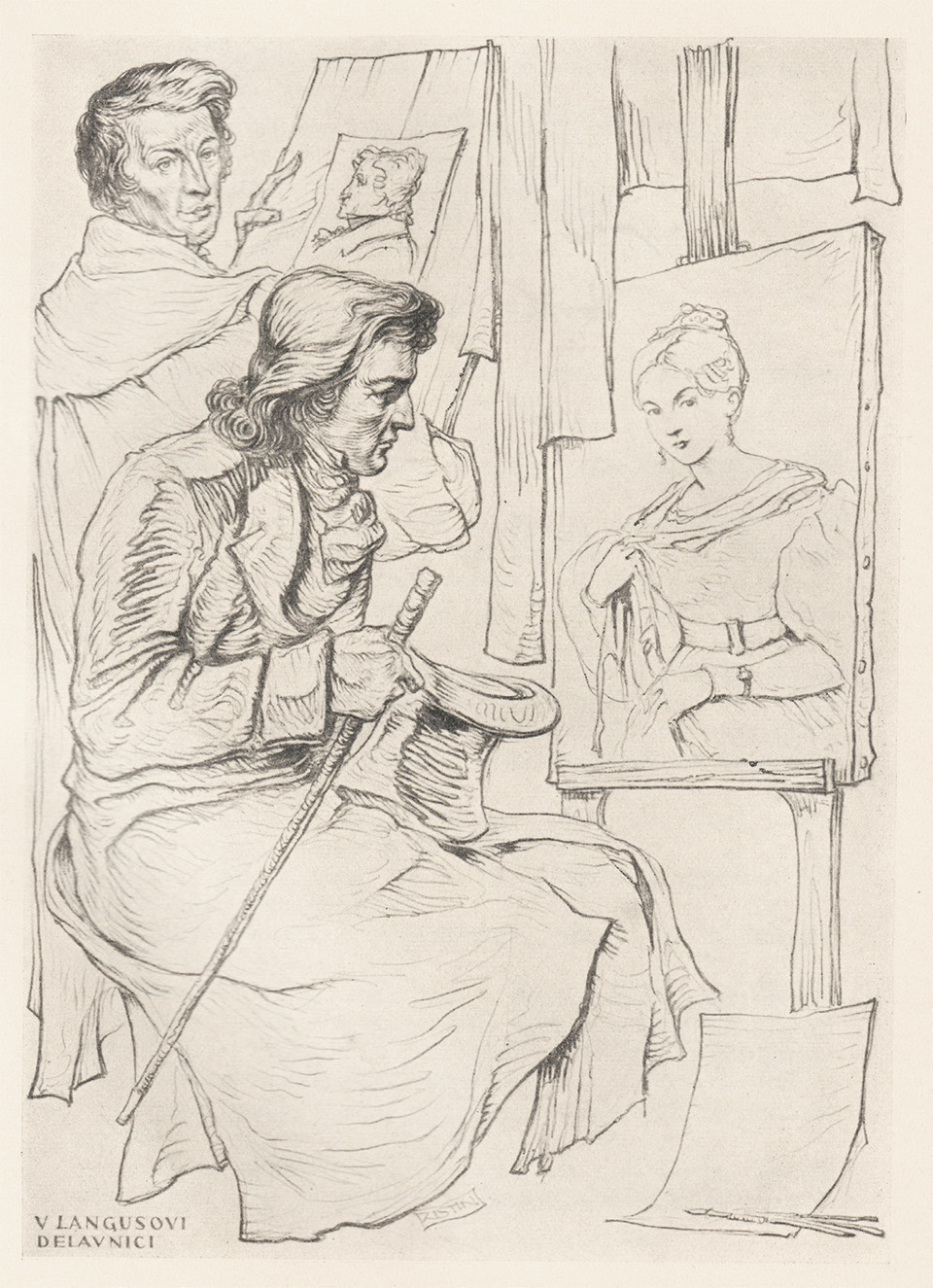
Elko Justin, In Langus's workshop, 1937, pen-and-ink drawing
Prešeren is looking at Langus's portrait of Julija: “Well, sir doctor, when will you have your portrait painted? Your portrait would no doubt at some time be very valuable.” (From Memories of Prešeren by Ernestina Jelovšek)
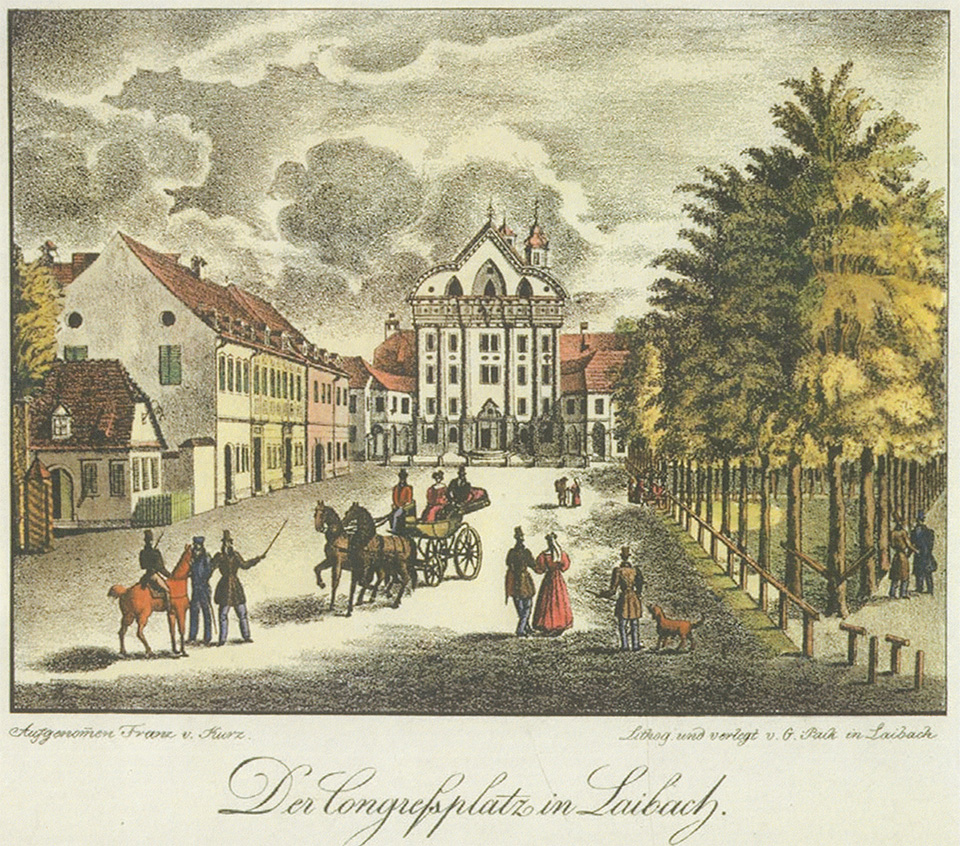
Franz Kurz zum Thurn und Goldenstein, Congress Square (Kongresnitrg), 1859, colour lithograph
The artist who painted the first posthumous portrait of Prešeren was also the creator of a template for a lithograph of Congress Square. From 1840, Metka Podboj ran the Gostilna Pekel inn in the house on the far left, which is where Prešeren fell in love with her daughter Jerica. He composed the poem Pod oknam (Beneath the Window) during this period. Prešeren's first home following his return from Vienna in 1828 was just four doors along, on the first floor of his friend Kastelic's public house Na Griču.
Prior to the fateful year of 1833, when his heart was troubled by Julija Primic, Prešeren published poems in three issues of Kranjska čbelica, which drew attention to his exceptional talent for poetry (1830: Lenora, Povodni mož (The Water Man), Slovo od mladosti (A Farewell to Youth), 1831: Ljubezenski sonetje (Love Sonnets), Nova pisarija (New Writings)…, 1832: soneti (Sonnets), Turjaška Rozamunda (Turjak's Rozamund), Zvezdogledam (Stargazer). His love for Julija remained a mere poetic desire, as she got engaged to Jožef von Scheuchenstuel from a family of noble officials and went on to marry him in 1839. Prešeren had expressed his feelings for her in the poem Sonetni venec (A Wreath of Sonnets) in 1834. In the same year, the third edition of Kranjska čbelica was published, in which he published Sonete nesreče (Sonnets of Misfortune), Glosa (Gloss)and Gazele (Gazelles).
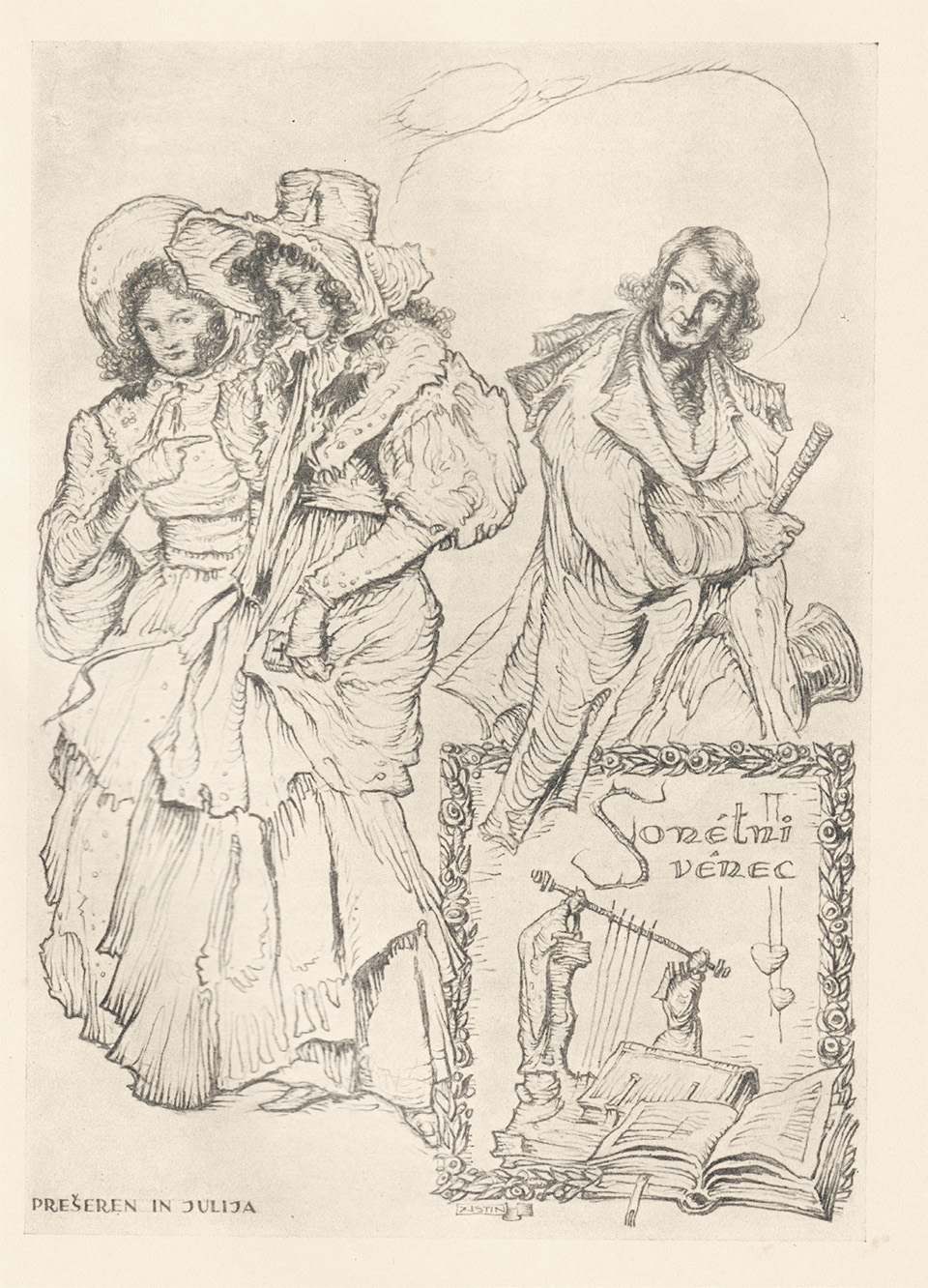
Elko Justin, Prešerenand Julia, 1937, pen-and-ink drawing
In July 1835 Prešeren's good friend and mentor, Matija Čop, died whilst swimming in the Sava river. Prešeren wrote the poem Krst pri Savici (Baptism on the Sava) in his memory. His uncle Jožef also died in the same year. Prešeren then became friends with the Pole, Emil Korytko, a collector of folk poems, but this was only to last until 1839 when Korytko died from typhoid. That year Prešeren's best friend, Andrej Smole, returned from exile. Together they made plans to publish literature in the Slovenian language and even for a Slovenian newspaper. Just a year later, before they had had time to bring their plans to fruition, Smole died too.
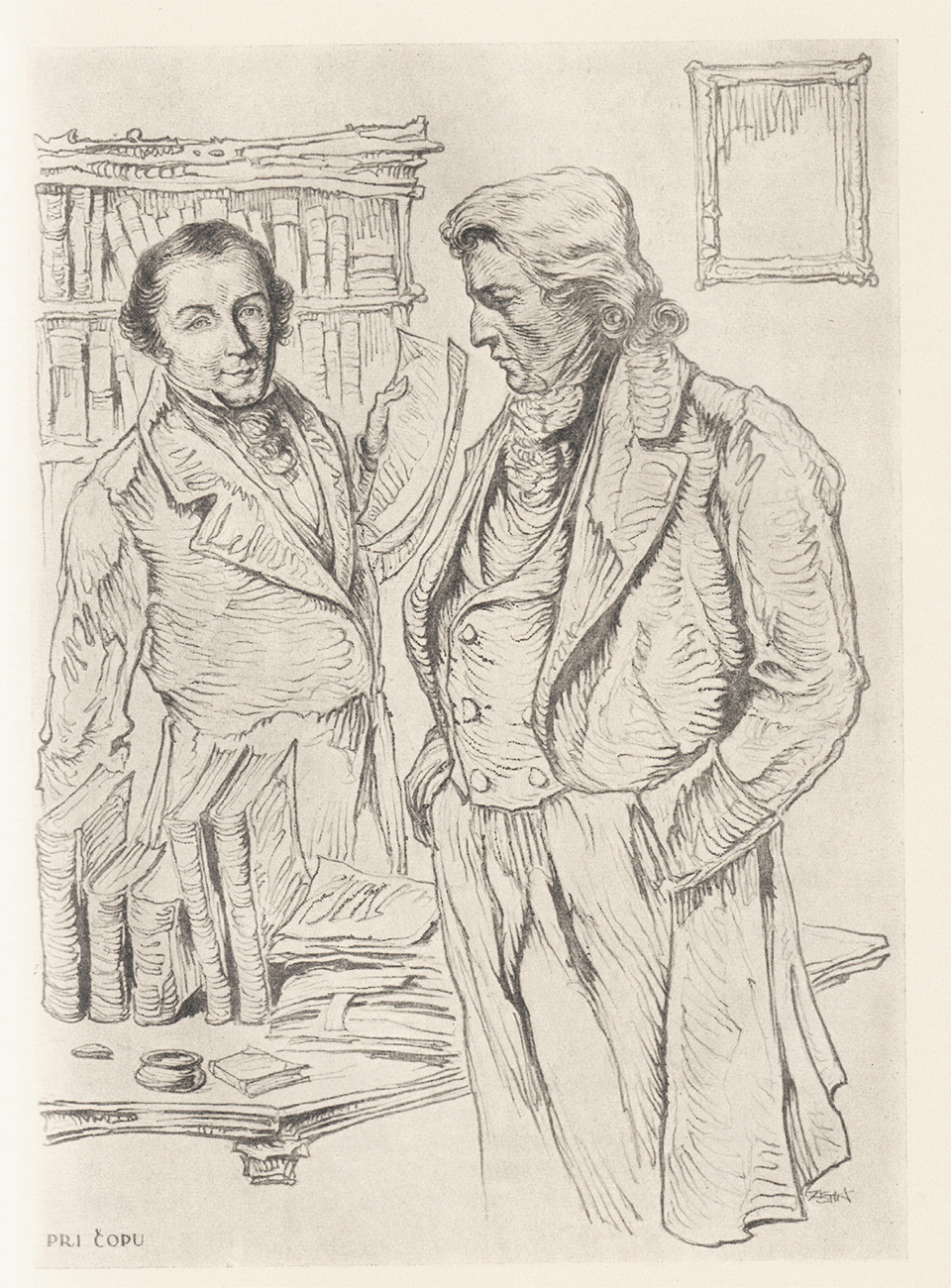
Elko Justin, Prešeren with Cop, 1937, pen-and-ink drawing
In 1937 Elko Justin created a series of illustrations for the book Roman o Prešernu (A Novel about Prešeren), which was written in the same year by Ilka Vašte.

Prešeren and Smole, 1937, pen-and-ink drawing
Prešeren spent a period of creative crisis, which intensified due to the tragic events, in the company of the young Ana Jelovšek. They had three illegitimate children: Terezija (1839–1840), Ernestina (1842–1917) and France (1845–1855). The poet's freethinking life principles, which were reflected in his public life and relationship with a lower-class servant-girl, was certainly one of the main obstacles that prevented the conservative bourgeois community from granting Prešeren an independent barristership. On his sixth application he opted for a barristership in Kranj and moved there in 1846 where he remained until his death on 8th February 1849. Prešeren is buried in Prešernov gaj (Prešeren's Grove) in Kranj.
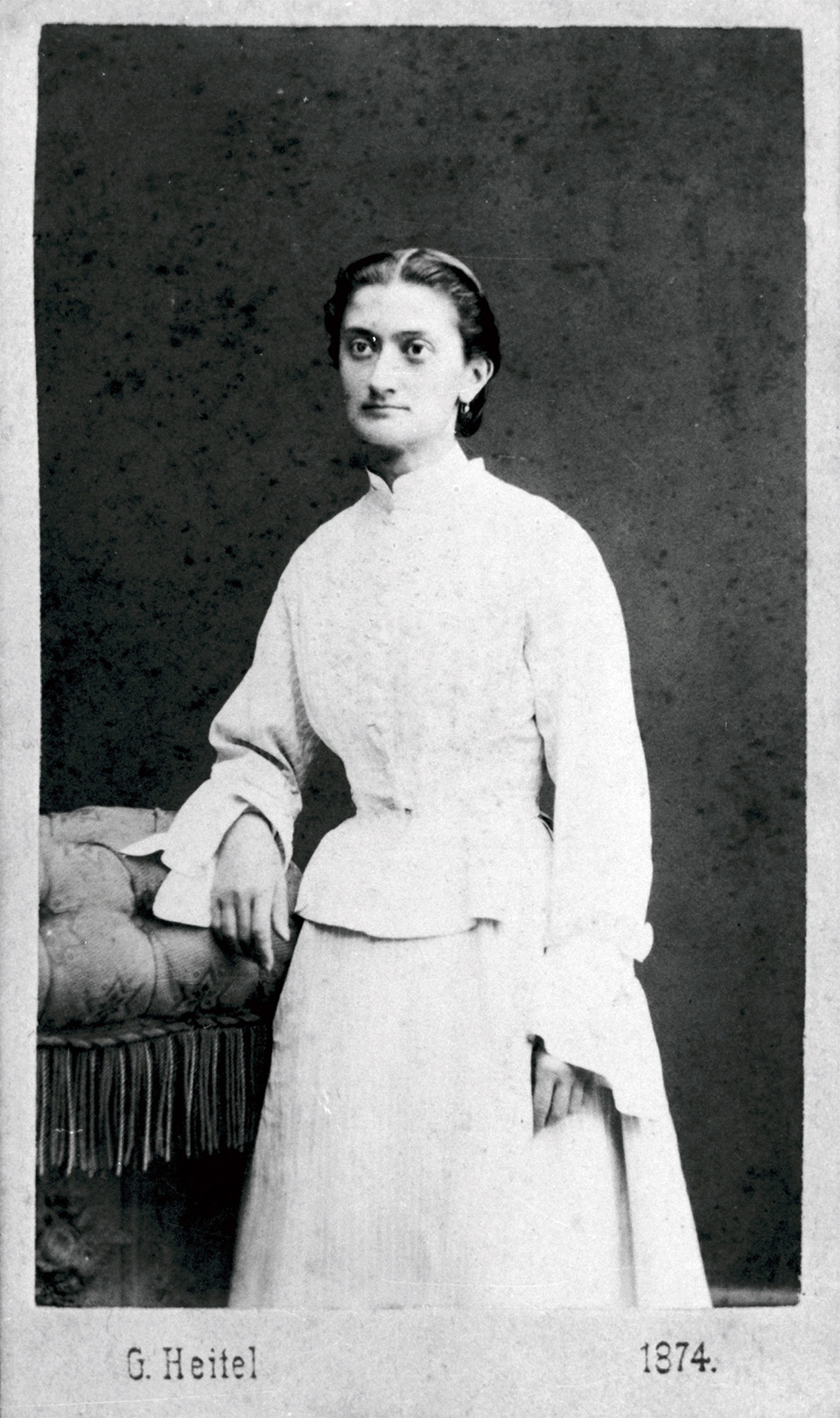
Photograph of Ernestina, name of photographer unknown
In 1875 and 1876 Ernestina wrote Erinnerungen an Dr. Franz Prešéren (Memories of Doctor Franc Prešeren) in memory of her father.
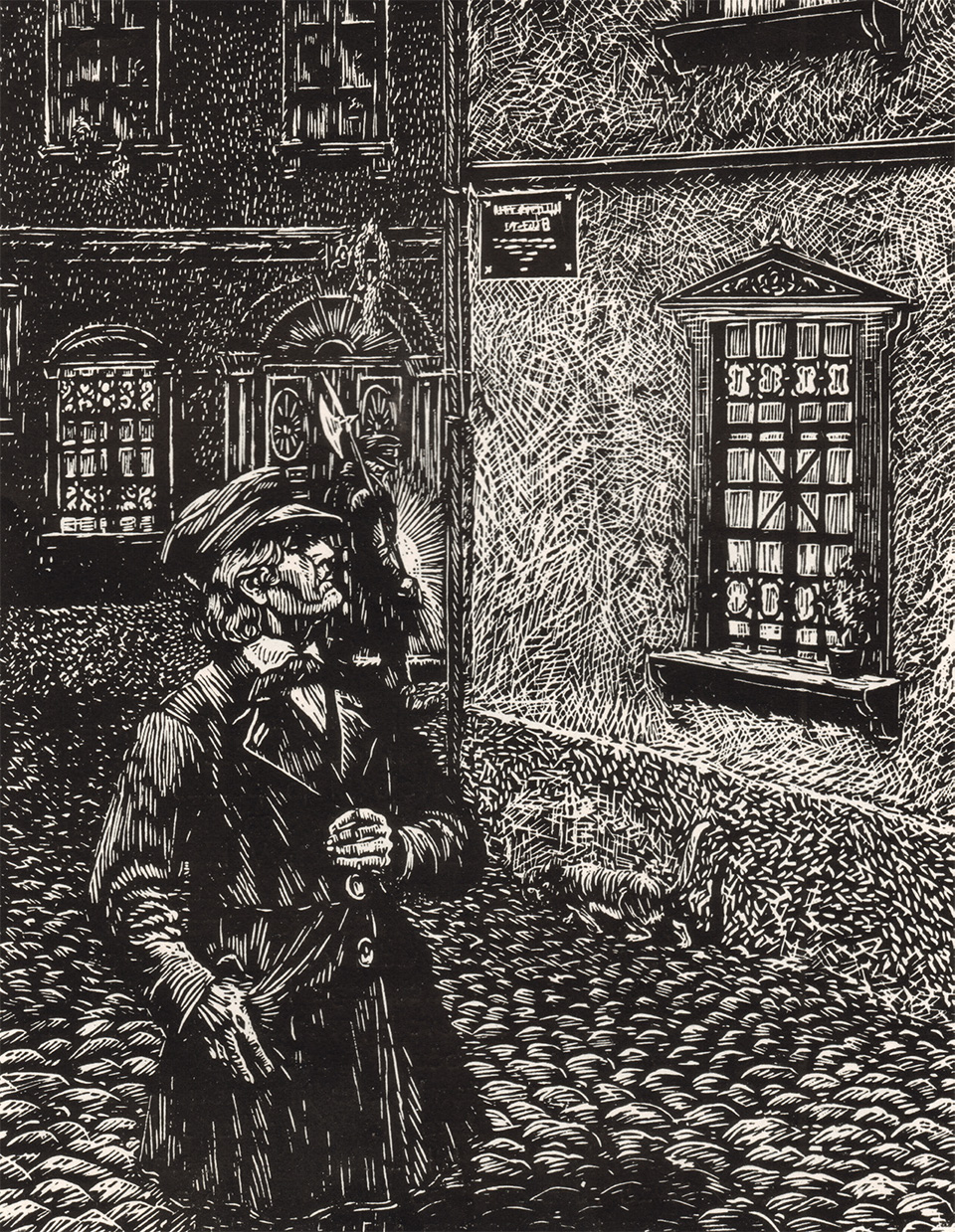
Hinko Smrekar depicts an image of the poet with a cap. He is walking through the town streets of Prešeren’s era. The wood engraving was created around the year 1940.
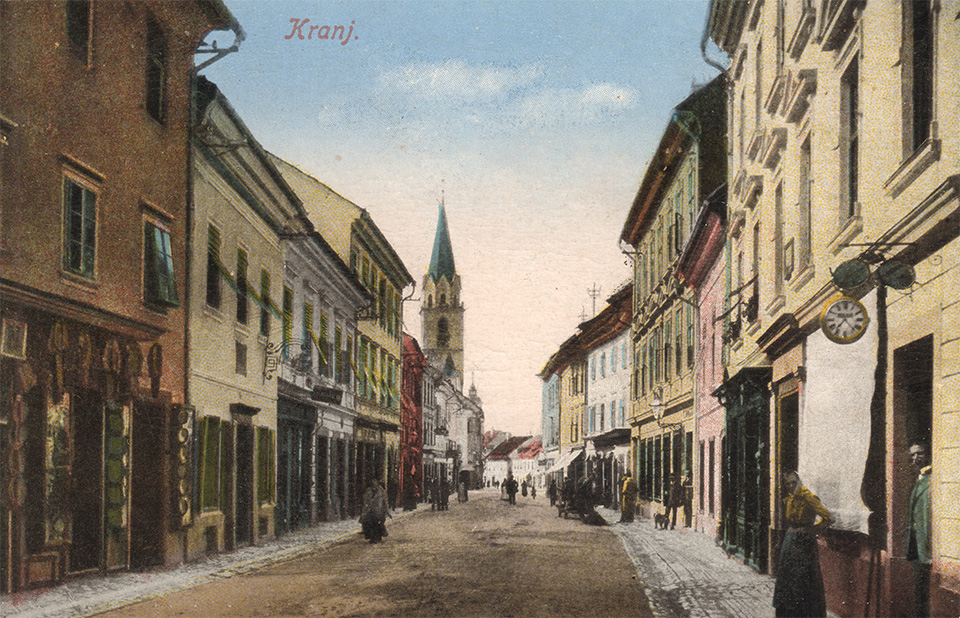
Prešernova ulica (Prešeren street) in Kranj